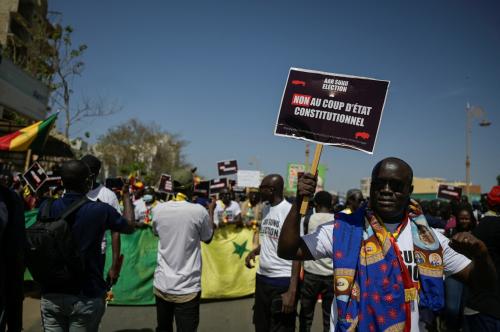On August 14, 1947, Pakistan was born amidst a deep crisis. So tenuous was the situation that Indian leaders were confident of Pakistan’s failure and forced reunion with India. Sixty years later, the country is projected in an equally pathetic light. Ever since the early 1990s, Pakistan has been termed a “near-failed” state by various observers, an assessment that hardened after 9/11. At least one prominent intelligence report has suggested that Pakistan would virtually collapse by 2015. While the alarm is grossly exaggerated, one cannot deny that the state has progressively weakened over the years. That said, however, the challenges that threaten the Pakistani state are different to those usually cited.
In my view, the integrity of the Pakistani state is likely to be challenged by only one factor in the long run: a governance failure. Every other threat stems from this concern. Governance failure itself is an outcome of a number of intertwined variables. Perhaps the most pertinent underlying cause is a lack of maturity in the country’s political institutions. This in turn stems from a lopsided civil-military equation, because of which the military elite has managed to frame the entire national political discourse within a strategic construct. However, equally responsible for the retarded institutional capacity is the failure of the civilian leadership to deliver to the masses. While the plight of the civilian leadership has usually been blamed on the military, it is equally the result of its own incompetence.
Absence of trust between the civilian and military enclaves has meant that political decision-making is highly exclusive and does not provide opportunities for broader participation. Lack of continuity in macro-level policies and a stark absence of a national consensus on the vision of the state are direct outcomes of an unharmonious civil-military relationship. Moreover, the perverse incentives generated from such an equation have led to the progressive weakening of the key pillars of the state. Consequently, the functionaries responsible for service delivery have all but been rendered ineffectual.
The institutional dilemma is also responsible for a poor track record on development. Despite a tremendous macro-economic turnaround, and decreased poverty levels, the number of poor people, the level of inequality, and the effectiveness of social welfare delivery remain dismal. While most experts have attributed this to Pakistan’s traditional bias towards excessive spending on defence, in reality resource availability is a secondary concern. The real problem is the lack of institutional capacity to absorb and utilise expenditures allocated to the development sector. The issue is compounded by inadequate monitoring and evaluation, which distorts incentives for service-providers and improper or inefficient targeting of beneficiaries under various programmes. Benefits earmarked for the poor are captured by the rich. Similarly, high levels of corruption mean that only a fraction of the total funds disbursed are actually utilised. These are all institutional problems stemming from governance failure.
Perverted institutional arrangements are dangerous since they limit the state’s ability to deliver. If allowed to continue, people lose confidence in the state’s abilities and the probability of social unrest would grow. Pakistan is especially susceptible to this. An inherently anti-state posture of the citizens implies that the state will be unable to draw support from the masses for any major policy decision. For a state that is already suffering from a lack of cohesion and where vested interests have a stake in diluting its credibility, a propensity to oppose virtually all major policy decisions implies automatically the near impossibility of forming a national consensus around key issues.
The implication of this is clear. If the downslide continues, the masses will increasingly resent the state. Moreover, society will grow resigned to the fact that the prospects of a turn-around are minimal. Politically, vested interests would then be able to manipulate mass sentiment, thus keeping governments weak and not allowing sustainable political processes to develop. Since permanence in the political system is only possible if national consensus on larger political issues exists, this will in all likelihood remain elusive.
Socially, acute resignation could get transformed into increased crime, lawlessness or internal violence propagated by disgruntled groups. An extreme outcome could be a social implosion that further destroys social cohesiveness and loyalty to the state. Alternatively, the state structure could completely break down in the face of unsustainable levels of violence (the hyped threat of extremism would then become real). Additionally, this would also give a fillip to Pakistani paranoia over an externally engineered territorial disposition or temporary occupation by a country like India or the US who would see an anarchic Pakistan as a grave threat to peace within its own borders.
Let me end by pointing out that Pakistan’s decline into chaos is far from inevitable. In fact, if we are to look beyond the present alarmist sentiment focused on the extremist threat, the state’s recovery is far more probable than a further deterioration and eventual collapse. The presence of a functional bureaucracy, a strong secular military, as well as the writ of law (the lawlessness in the tribal belt has historical explanations and ought not to be conflated with the situation in the Pakistani hinterland) are all entrenched in the state structure and continue to act as strong buffers against any sudden breakdown.
Notwithstanding this, Pakistani leaders must shed their historic complacency about the magnitude of problems facing the state. The key is to urgently work towards ensuring a healthy state-society relationship. The governance failure is the principal bottleneck. To bring about change, the first prerequisite is a truce on the civil-military front. This does not necessarily imply a return to liberal democracy. Rather, more important and realistic in the immediate future, is a mutually acceptable responsibility-sharing formula between the military and civilian enclave (perhaps a transparent National Security Council?). Under a sustainable political framework, revitalising the key pillars of the state and public institutions would be far easier. Over time, one could envision a combined effort by the military and civilian elite to build national consensus around a vision for the state. If the consensus is generated through the participation of citizens, and if the state implements that vision, Pakistani citizens are sure to retain their confidence in the state. The sooner Pakistan’s leaders move in this direction, the better.



Commentary
Op-edPakistan: Still Growing, at 60
August 14, 2007